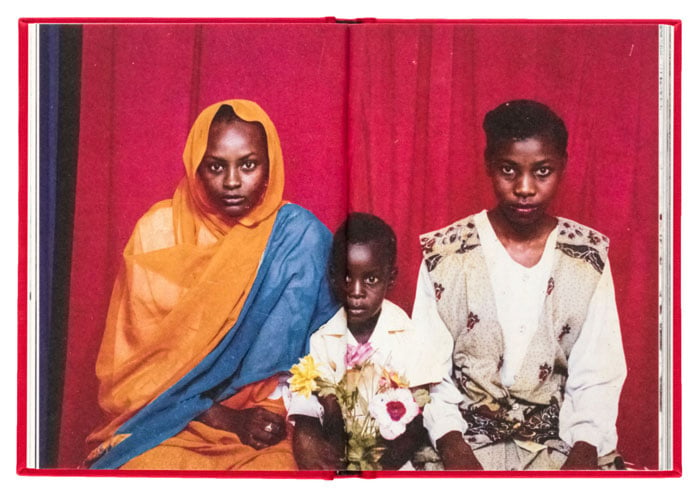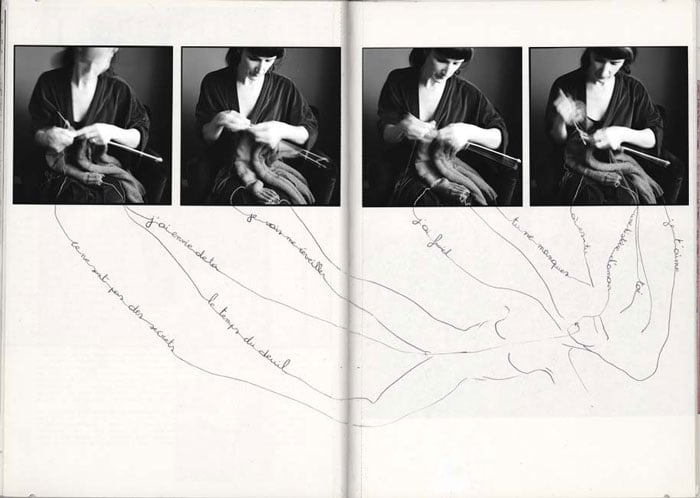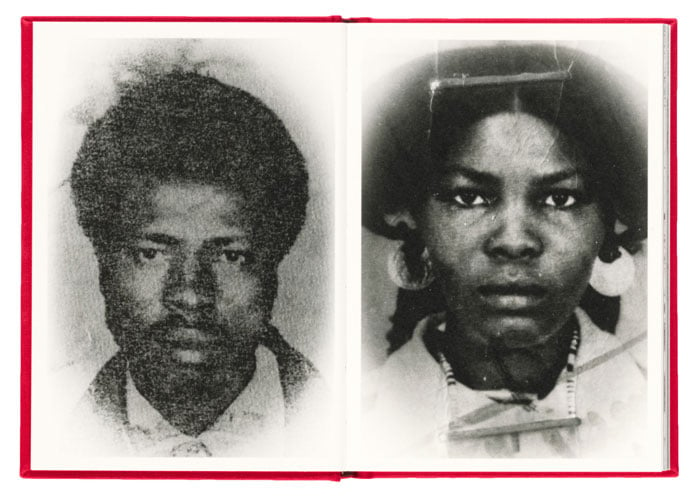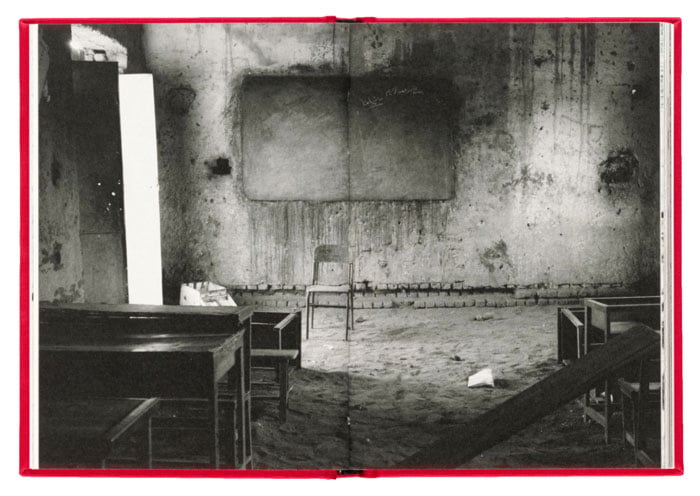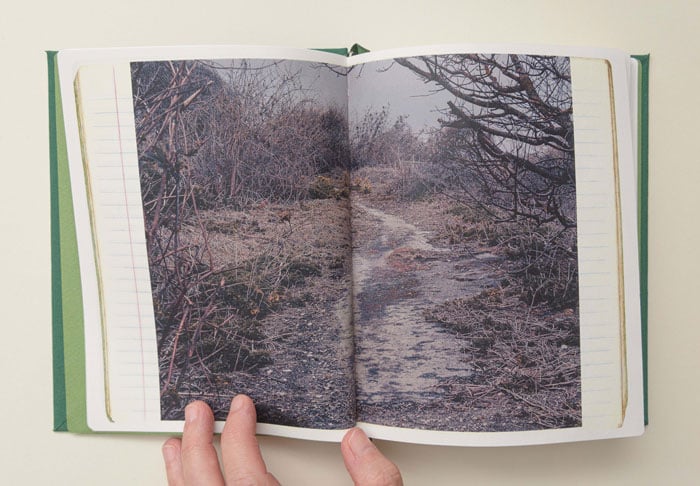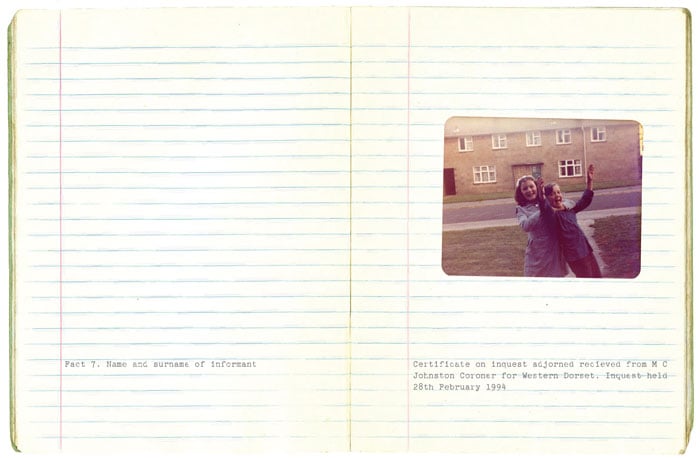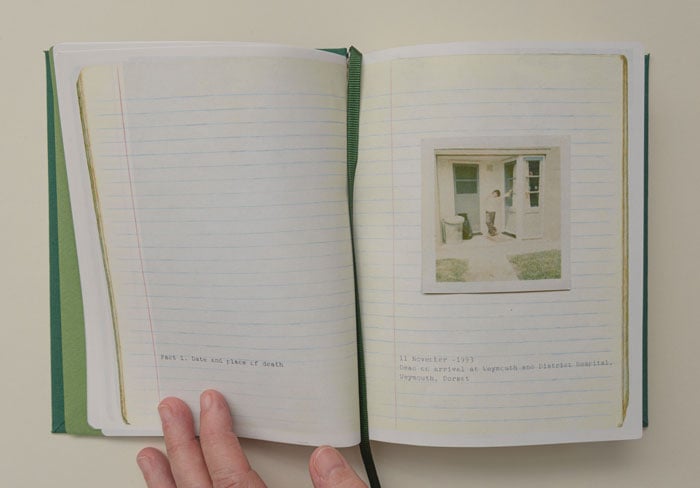In this month’s blog post we look at a series of photobooks that examine how we respond to loss, grief, and its aftermath.
Read more about Photobooks in previous blogs:
- The Grid: Bringing Order, Comparison and Narrative to the Story
- Laia Abril and Rafal Milach: Windows on the world of Misogyny
- Women and Photobooks: Unwriting History
- Photobooks and Collaboration
- Ernest Cole, Photography and Justice
- Photography and Brexit
Image: Salih Basheer
Grief is something that has been a returning theme in photography. The camera has performed its function of recording loss, of memorialising life that was once there but no longer isn’t.
In the 19th century Memento Mori recorded the faces and bodies of dead children in ways that likened their passing to falling asleep, that provided a visual consolation that perhaps now their suffering was over, they were in a better place with Jesus in the garden of Heaven. It was part of the process which, as Audrey Linkman writes in Photography and Death, in ‘…the nineteenth century initiated a process of distancing the living from their active involvement with death.’
Roland Barthes, Camera Lucida
Roland Barthes famously wrote about grief and the image of his recently deceased mother in Camera Lucida. Only here the picture of his mother in the Winter Garden (or conservatory) was never shown (and perhaps never existed).
In the Winter Garden photograph, he sees the kindness of his mother. It is this kindness that makes the picture of his mother as a child a picture in which he recognises something that goes beyond a codified image. It’s a picture that has something of her soul in it.
It’s a kindness he recognises from her final illness, and he recognises his mother as a child from tending her when she was dying, a time when, as he writes, ‘she became my little girl’.
Barthes of courses characterised this soul (which is my word), this particular pinprick of recognition as ‘the punctum’, something quite at odds with the more informational and structured ‘studium’. ‘The studium is ultimately always codified,’ he wrote. ‘The punctum is not.’
That sense of escaping the generic, codified, and formulaic is something that is shared by the photographers of grief we will look at in this month’s post on photobooks.
Anne de Gelas, L'Amoureuse
In L’Amoureuse, Anne de Gelas remembers her husband through an explanation of personal sorrow and loss (and how to overcome it), with the establishment of a new identity and a new relationship with her son. ‘There is never a right way to tell a child about his father's death,’ she writes in the introduction to the book.
Image: Anne de Gelas
She continues, ‘T., my lover and father of my son, died on April 5, 2010 of a brain stroke. He fell beside us on a beach at the North Sea. The violence of his death put me in front of a big void…a silence that echoed in my head only equal to the brightness of the blue sky which no planes crossed because of the ashes of a volcano in anger, my anger. To face that loss, I plunged myself into the work that I had started more than 10 years ago consisting in writing a personal diary, now focussing on telling about my suffering but also about that surplus energy that burst within me.’
That surplus energy explodes onto the pages of the book. It’s a creative exercise where threads of consciousness (as in the image featured here) exploded out of her grieving mind, but also an energy that is filled with despair, loss, and frustration. She has lost her husband, her friend, her lover, the father to her son, and all that must be rebuilt.
In L’Amoureuse and her subsequent books, Anne de Gelas documents, with very direct and unflinching emotional detail, that reconstruction of her life and the failed attempts that accompany her journey to new life and new relationships.
Image: Salih Basheer
Salih Basheer, 22 Days in Between
There is also a directness to Salih Basheer’s recently published 22 Days in Between. The title also refers to his parents. Those 22 days are the gap between his mother passing away of causes unknown and his father dying in hospital after being hit on the head ‘while mediating a conflict’. Salih Basheer was 3 years old at the time.
The first images in the book are old passport photos of his parents, Fatma and Basheer, a kind of identity card memento mori. They look old and they have embedded in them a previous life.
Unlike Anne de Gelas, Salih Basheer is 3 years old when his parents pass. The people best equipped to help him bridge the grief are not there. So he cannot bridge the grief. That is what the book is about; his loss and his essential inability to overcome it. It is written into him.
Image: Salih Basheer
The text, in both Arabic and English, details what happened after his parents died. He moved in with his grandmother. We see her house with its muddy pathway, we see the school Basheer attended, we hear of the games he played, we get a sense of place from his home in Sudan, but we also see the depression that followed after he moved from his parents’ old home, their absence becoming embedded in his soul as he became older, eating away at his sense of self. 22 Days in Between is a book about falling in upon yourself.
Image: Salih Basheer
His contemporary images of old homes, of schools, of courtyards are an attempt to piece together the man he could have been, the person who was taken from him. It is, one feels, an attempt that is in vain. But in a strange way that doesn’t matter, because the trying is what matters, the trying is what makes us who we are.
Image: Dawn Rodgers
Dawn Rodgers, The Shadow Lands
Dawn Rodgers (a recent Falmouth Flexible MA Photography graduate) also deals with unreconciled grief at the loss of her brother in her recent trilogy The Shadow Lands series. The series consists of three books: Sorrow, The Shadow Land and Stone and Bone. ‘Each book,’ she writes, is ‘an attempt to further investigate and document my feelings of loss and to create a personal world in which my sibling continues to exist, and I can be with him once more.’
Sorrow is a book in which the sense of loss that Barthes felt for his mother, de Gelas felt for her partner, and Basheer felt for his parents is compounded by time and the inability to ‘find words to describe his loss’.
Image: Dawn Rodgers
It’s a handmade book made in the form of a facsimile of one of her brother’s school notebooks. There are excerpts from his death certificate, succinct excerpts that like the key parts of the other artist’s text are direct to the point of bluntness. Surrounding all the poetry, there is a brutal understanding and communication of the pain of grief.
That directness comes with the statement of facts.
Fact 1 is the Date and place of death; 11 November – 1993 Dead on arrival at Weymouth and Districk Hospital, Weymouth, Dorset
Accompanying that fact is an old family photograph of her brother as a boy standing in a doorways, the photographic fact that he is her set against the certificate fact that he is dead.
Image: Dawn Rodgers
Personal details such as his name (Geoffrey Rodgers), his place of birth (Congleton), and his occupation (Power supply wireman) are interspersed with images of Dorset landscapes, seascapes, and rock formations. These are hints of the Thin Places; places where different worlds overlap and intertwine, where the powers of the elements, of the hills, the valleys and the vast expanses of geological time move us away from our grief to a place of a different order.
We don’t hear all the details of Geoffrey’s life, or of his death. There are parts of it that are almost buried in the trees, and sand, and rocks that Rodgers shows. He is embedded in the land of Dorset (and Dorset is a land that feels old), locked into old ways of being and seeing. Unlocking the clues to those ways of being and seeing, navigating in that land is what Sorrow and The Shadow Land Series invites us to do.
Image: Dawn Rodgers
 Colin Pantall is a photographer, writer and lecturer and teaches on the MA Photography programme at Falmouth University.
Colin Pantall is a photographer, writer and lecturer and teaches on the MA Photography programme at Falmouth University.
.webp)
